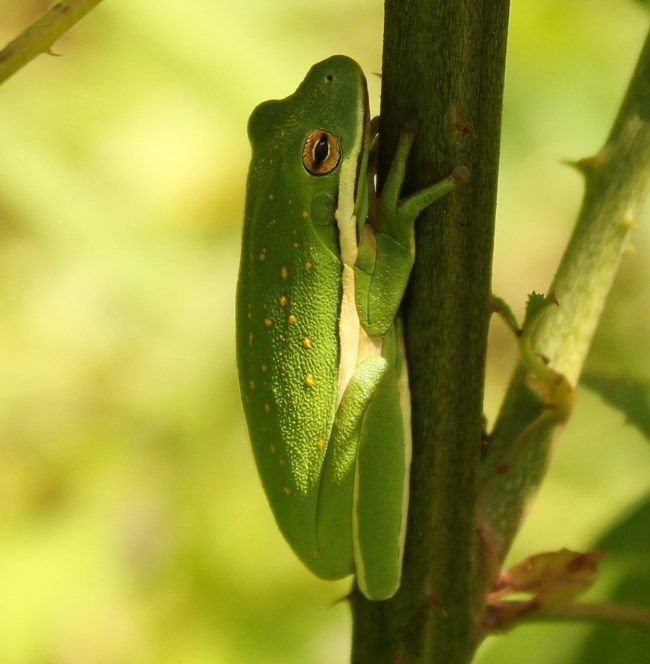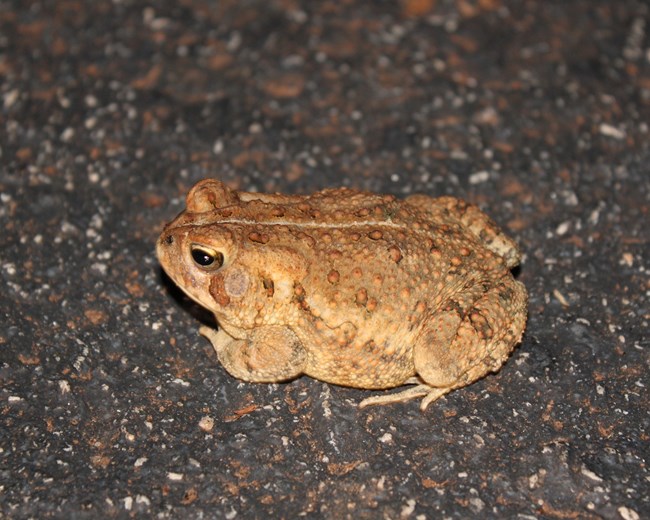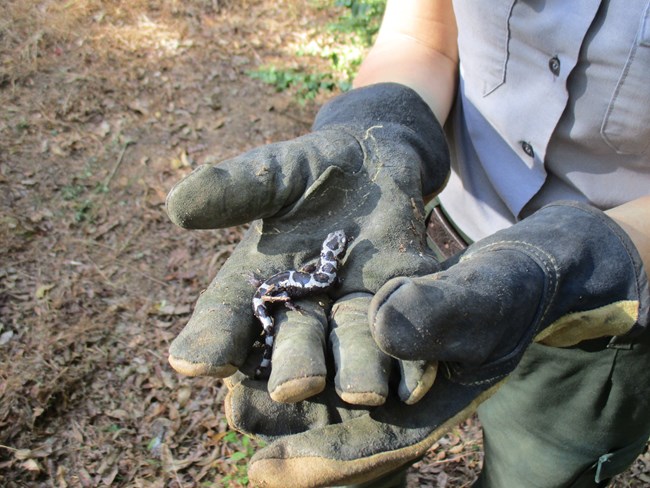|
Ninety-Six supports many different habitats for amphibians such as bottomland hardwood habitats (also known as river swamps), shallow wetlands, streams, and floodplain areas. While there are many different species of amphibians found at Ninety-Six here are three that you may see on your next visit! 
NPS/VIP Wilson Green tree frog (Dryophytes cinereus)Diet: Green Tree Frogs have a basic diet of crickets, earthworms, wax worms, and other various insects. Lifespan: Green Tree Frogs can live up to 6 years in the wild. Habitat: Green Tree Frogs are often found in ponds, lakes, marshes, and streams. They do like to hide in floating vegetation and grasses. Where to find: You can find these frogs around the park where it has rained, and they will generally be on the side of a tree or building where it is cool and wet. Season of Sight: You will see Green Tree Frogs in the spring and summer and not so much in the fall and winter because it becomes too cold for them. Breeding season: Strongly influenced by day length, precipitation, and temperature the breeding season of a Green Tree frog is usually in the Spring-Summer. Fun Fact: The Tree Frog species can be found on every continent except for Antarctica. 
NPS/VIP Wilson Fowlers toad (Anaxyrus fowleri)Diet: Insects and ground-dwelling invertebrates (beetles, millipedes, ants and spiders). Lifespan: Fowler’s toad lives about 5 years in the wild. Habitat: Flood plains, wooded areas, river valleys, streams and ponds, and marshlands. Where to find: At the park you will find these toads near water but not on the edge of the water probably more inland where it is still damp (near mossy areas). Season of Sight: These toads will be found in the spring and summer during the evening/night. Breeding season: Spring or early summer (Mid-April for example). Fun Fact: These toads like to “bury” themselves in the soil or under rocks, plants when inactive. 
NPS Marbled salamander (Ambystoma opacum)Diet: Worms, slugs, snails, spiders, millipedes, crickets, ants, beetles, and other invertebrates are the diet of the Marbled Salamander. Larger marbled salamanders will also feed on spotted salamander larvae, wood frog tadpoles, and zooplankton. Lifespan: Marbled Salamanders can live 8-10 years. Habitat: Deciduous woodland, sandy-soiled habitats, rocky slopes, and swampy soils. Where to find: Usually hidden under rocks and logs on wooded slopes. Season of Sight: Spring and summer. Breeding season: While you will see these salamanders in the spring and summer under rocks and logs, they breed in the autumn. Fun Fact: The bands of a female Marbled Salamander are more silver in color than a males’ bands (which are white). |
Last updated: April 29, 2023
